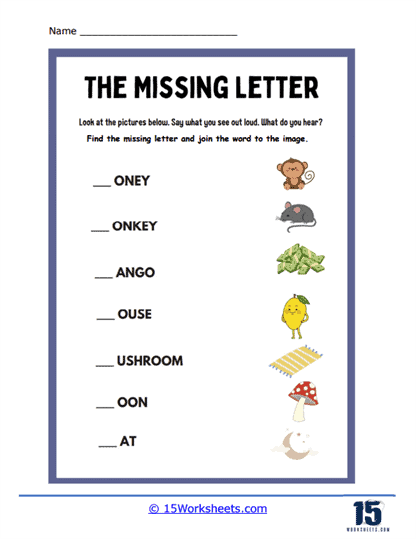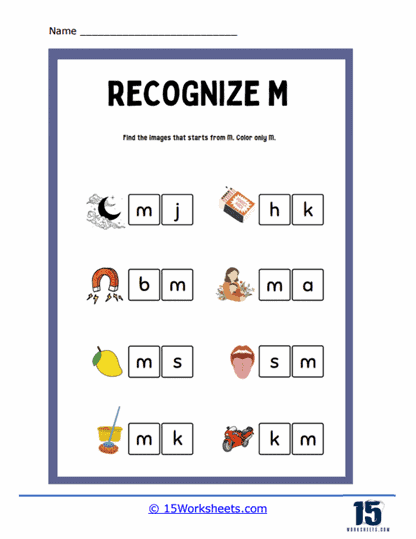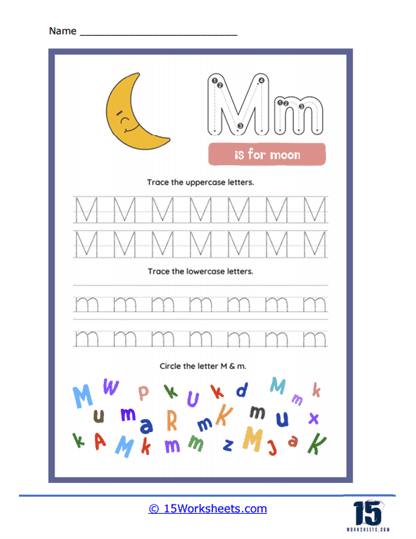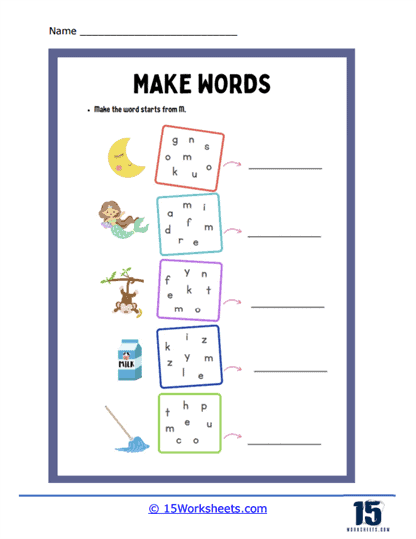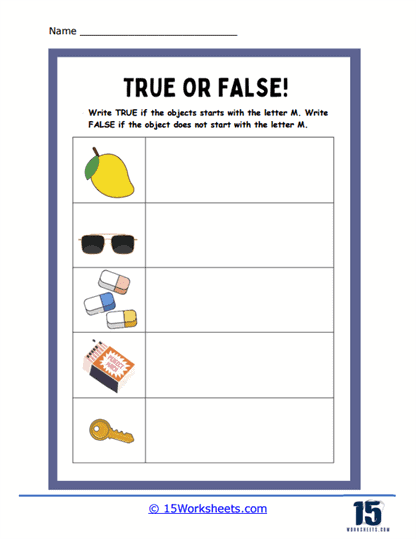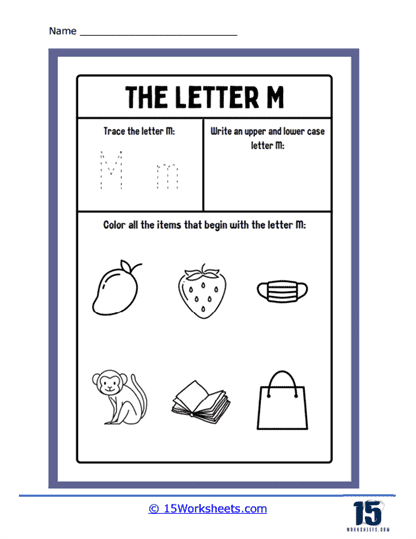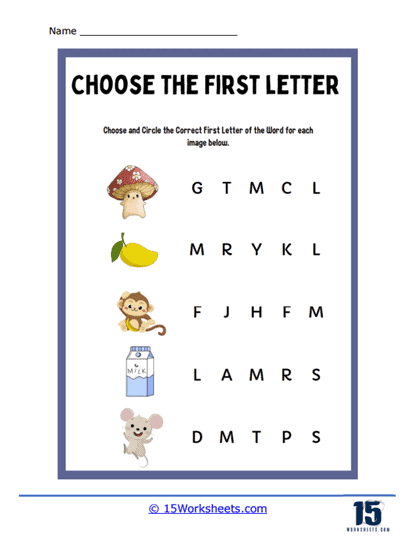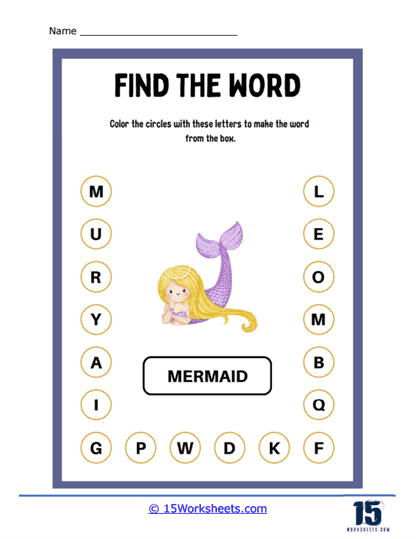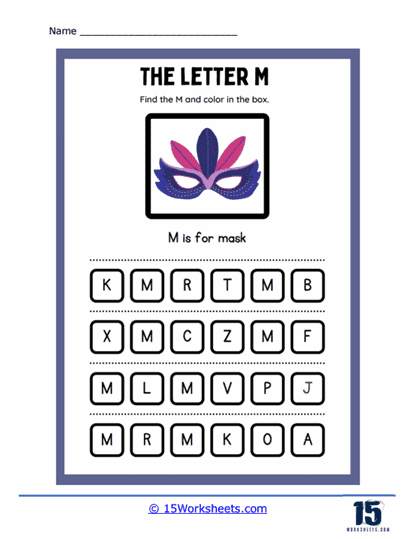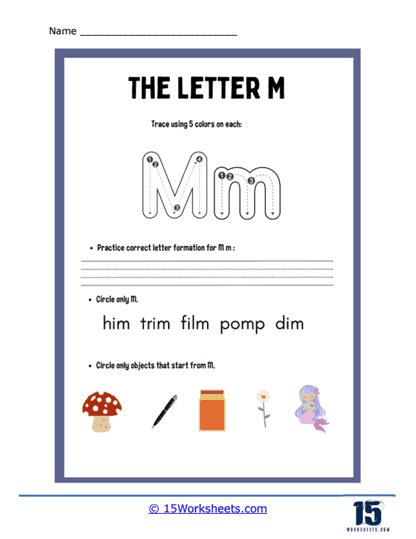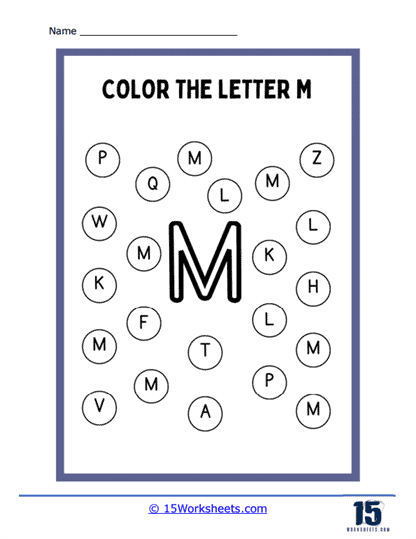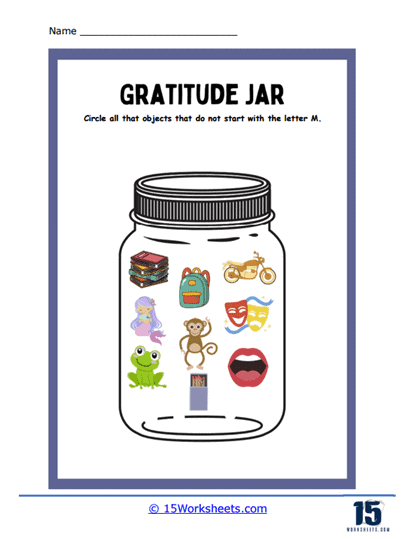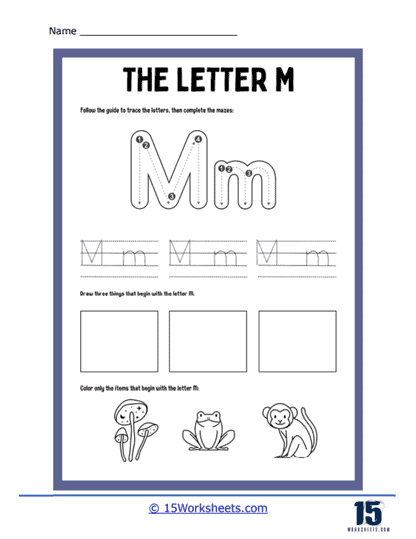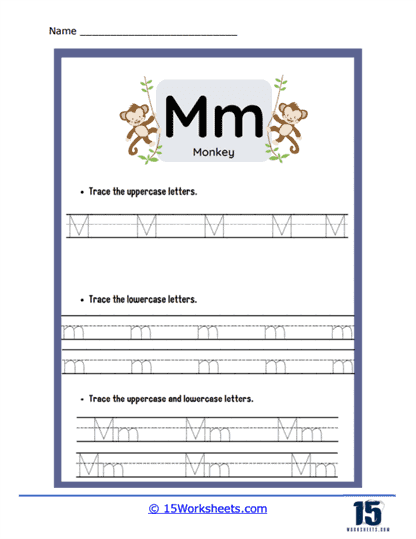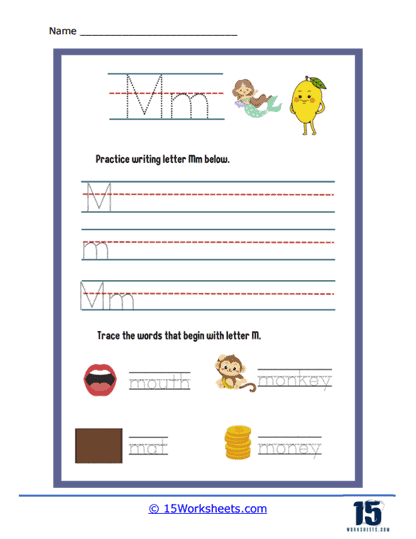Letter M Worksheets
About These 15 Worksheets
These worksheets can come in many different styles and have many different types of activities, they are all designed to help you learn about the “Letter M.” Some worksheets will have a big picture of the letter “M” that you can color. By coloring the “Letter M,” you become more familiar with what it looks like. The worksheet might also have dotted lines in the shape of the “Letter M” for you to trace. Tracing is when you use your pencil to draw over the dotted lines, and it helps you learn how to write the letter. Some “Letter M Worksheets” may also have pictures of things that start with the “Letter M,” like a music, a map, or a man. These pictures help you connect the “Letter M” with the sounds it makes in words.
Another fun activity that we explore here is a “letter hunt.” In this activity, you look at a box full of different letters and try to find all the “V’s”. This helps train your eyes to recognize the “Letter M” among other letters. Some sheets will have simple words that contain the “Letter M.” You can practice reading and writing these words to gain more confidence with the “Letter M.”
These are a fun and helpful tool for learning about the “Letter M.” They are like a playground for your brain, where you can explore and play with the “Letter M” in different ways. Whether you’re coloring, tracing, looking at pictures, hunting for the letter, or reading and writing words, you’re learning more about the “Letter M” and becoming a better reader and writer.
Teaching the Letter M Sound
Teaching the sound of the letter M is an interesting and lively process. Begin by introducing the letter M, either by writing it on a board or a piece of paper. Let the student know, “This is the letter M. M makes the /m/ sound.” It’s important to repeat the sound several times and encourage the student to follow your lead.
Next, highlight the connection between the sound and a physical action. When pronouncing the /m/ sound, gently place your hand on your nose and lips to feel the vibrations. This sensation helps illustrate that the /m/ sound is a nasal sound, produced with the help of vibrations in the nose. Ask the student to mirror this action.
You then provide guidance on mouth positioning to make the /m/ sound. This requires closing the lips and letting the air pass through the nose to create the /m/ sound. To help with this, introduce a visual aid such as a picture or object beginning with the /m/ sound, for instance, a monkey, a moon, or a mug. Clearly say the word, putting emphasis on the initial /m/ sound.
Effective mastery of the /m/ sound is achieved through practice. Offer the student words that start with, contain in the middle, or end with the letter M. Prompt them to say words like ‘mom’, ‘ham’, ‘mime’, ‘lamb’, ‘magic’ out loud. Enhance the learning process by incorporating a song or rhyme that includes many words with the /m/ sound, making learning fun and memorable.
Use worksheets to complement this learning that focus on the letter M. These can involve coloring activities, tracing the letter M, or identifying objects that start with the /m/ sound. Reinforce learning further by reading a book together featuring the letter M. The contextual exposure greatly aids the learning process.

